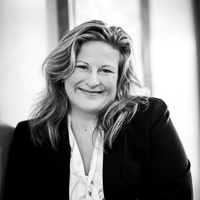Is Your Post-Pandemic Cash Flow Strong?

Unquestionably, 2020 was a unique year — and it left many consumers with mixed emotions about their financial situation, even as we crossed into 2021 and tried to recover.
According to our 2021 Family Budget Survey -- conducted in April 2021 -- 47% of consumers felt they couldn’t get ahead financially, and 58% said they were living paycheck to paycheck. This was in spite of 71% saying they felt they were in a financially steady place, and 92% saying they had enough money to cover monthly bills and necessary expenses at least most of the time.
“Cash flow has been a historic problem,” says Blain Pearson, Ph.D., undergraduate program director for Kansas State University’s Department of Personal Financial Planning. “The overall trend was further exacerbated by COVID-19, because [there were] so many people who lost their jobs.”
Although increased vaccination rates are helping to reduce the physical risks associated with the virus, there’s no easy remedy for the pandemic’s economic effects that have been felt over the last year or so. For numerous consumers, money may be tight; and trying to change that could prove challenging — yet not, however, impossible — for some of the following reasons:
Problem No. 1: People don’t always budget realistically
Consumers aren’t clueless about where their money is going; three-quarters of OppU survey respondents said they have a formal household budget — and a number said they were diligent about following it. Sixty-two percent said they were more likely to stick to their budget now than at the same time a year ago.
Budgeting, however, is not always easy, and others may have struggled to keep their spending on track. Only one-third of survey respondents said they always stuck to their budget during the last year.
People, according to Pearson, sometimes do a great job planning their intended weekly expenses, “but they don't do a good job of actually tracking that,” he says, and it’s unclear where their money actually goes.
Solution: Track everything
Logging what you’ve spent in Excel or using another method may help you realize if and when you’re overspending. Checking your credit card activity online can also help you see what you’re spending daily, says Adam Levin, chairman and co-founder of Credit.com and former director of the New Jersey Division of Consumer Affairs.
“Most people tend not to do that and are suddenly surprised,” Levin says. For example, if you pay for a number of purchases by swiping a debit card, but also don’t realize how much you spent on a credit card, and aren’t particularly tracking either, you may end up hampering your ability to pay your bills. This may then end up leading to credit card debt, late fees, and penalties.
However, impulse buys aren’t always the issue. Sometimes people just don’t make enough money.
Thirty-seven percent of consumers either strongly or somewhat agreed that their household’s monthly bills were more than what they made. In cases like this, if someone’s monthly income exceeds their expenses by only a minimal amount — such as $15 — and there’s no wiggle room in their budget, a random expenditure can completely throw things off, according to Matt J. Goren, Ph.D., assistant professor of financial planning at The American College of Financial Services.
“If you forgot to pack a lunch today and buy lunch at a restaurant, your budget is broken,” Goren says. “Some people just have blind spots in terms of where their money should be going. The rule of thumb that gets thrown around is your expenses [should be] about 20% less than your income.”
Problem No. 2: Variable spending reductions may only go so far
About seven-in-10 consumers who took our survey said their bills were a reflection of what they could afford.
But if this sounds like your situation, will you ever be able to get ahead?
If you’re trying to increase your bank account’s cash flow, relatively small spending cuts, such as downsizing the amount you spend on streaming services can only free up so much extra money, Goren says. Sometimes a more drastic approach is necessary.
Solution: Think big, but long term
“By cutting your housing bill by 10% or 20% percent, you’re going to have more effect on your budget than [if you cut] entertainment spending,” Goren says. For example, cutting a $20-per-month streaming service will save you $240 a year. However, cutting a larger monthly expense, such as $1,000 per month (or even a few hundred a month) from your rent, can have a much larger and more drastic impact on your checking account.
Fixed costs such as rent or car payments are often difficult to quickly reduce, but can make a big impact, Goren says. For example, if you recognize you’re spending too much on housing, work to put away $500 for moving expenses, and when your lease expires, move.
“Don't think of this as: ‘What can I do today to make my life better tomorrow?’” he says. “The answer is almost nothing. You’re going to get demotivated and give up hope. You can’t just change things around overnight, but you can look forward to a year from now and identify what the target is and work backward from that. When people have that longer-term mindset, that’s where we tend to see success.”
Problem No. 3: Sudden issues can derail cash flow
Unexpected emergencies, such as car repairs or medical issues, can saddle you with a significant expense that you may not have enough money to cover -- especially in the short term.
While 39% of survey respondents said their financial situation hadn’t changed in the past 12 months, more than a quarter — 27% — lost income or a job, and 21% experienced a financial emergency. Just over one-third of consumers had enough money on hand to make ends meet for one to four weeks if a financial emergency occurred — 8% said they couldn’t get by for even a week.
To pay for home repairs, hospital bills, or other unanticipated needs, some consumers may turn to credit. Using too much credit, though, can negatively affect your credit score, according to Levin, which can cause you to pay a higher interest rate if you at some point need a loan—and if you have a high credit card rate, you could end up spending even more as you try to pay the balance off.
“It’s sort of a spiral,” Levin says. “These are the kinds of things that contribute to zapping away at your buying power and savings. You have to look at credit as your friend. If you build, nurture, and protect it, it will be there; if you avoid it or discount the importance of it in your life, it will come back to haunt you.”
Solution: Save simply and separately
Proactively saving money to cover future unplanned expenses can help prevent you from needing to tap into credit. Goren suggests having at least a month of living expenses on hand.
“Or even better, two months, in a separate place—a savings account that’s maybe not even linked [to another account] so you don't [have] overdrafts,” he says. “Now you’re way better able to weather storms and deal with interruptions.”
We get it: Saving a large chunk of cash like that may seem like a lot of money. However, simplifying the saving process can help make it a habit. If you have a financial goal that requires saving $300 a month, such as the down payment for a home, Pearson advises treating it like a water or electric bill and setting up an automatic deposit into a savings account.
“The average American works 40-50 hours a week and is getting six hours [of] sleep at night; the last thing on their mind is, ‘Let me do more work on my financial situation,’” he says. “The more you can create a hierarchy system to make it automatic, the less you have to think about it; and you are more likely to achieve your goals.”
Problem No. 4: Having enough for savings
A number of Americans are finding it hard to save each month. One-in-five survey respondents said they are only able to put less than 5% of their take-home pay toward savings.
Solution: Save your stimulus
The stimulus money the federal government distributed over the past year might present an opportunity for consumers to contribute more to a savings account than they’d otherwise be able to, says Matthew Pelkey, OppU's director of financial education.
Three percent, in fact, already have; and the same amount said they’re viewing it as a cushion for their daily living expenses. Nine percent of Americans used their stimulus money to pay off debt.
“Inconsistent cash flow is something many people experienced during the pandemic, and it underscores the importance of building savings to buffer you in these times when you see a drop in income,” Pelkey says. “Now is a really good chance for folks who do have a little bit of surplus cash to begin building their emergency savings—however much they can afford to take and put it into a separate savings account.”
Conclusion: There is room for improvement
A fair amount of confusion about spending and saving exists within the country; a study by the FINRA Investor Education Foundation found Americans tend to have inflated self-perceptions of their financial knowledge, and the number who could answer at least four out of five basic financial literacy questions had declined from 2009 to 2019.
A growing number of consumers, though, are interested in becoming more knowledgeable about finance. Sixty-one percent of OppU survey respondents said they read blogs and/or visit financial websites to learn how to improve their financial situation, compared to 44% in 2020.
“The pandemic created a lot of financial uncertainty for people, and in times of uncertainty, many people will seek education,” Pelkey says. “It provides a sense of control.”
While pandemic-related uncertainty will hopefully continue to recede in the coming months, Americans could still face numerous financial roadblocks.
“Student debt levels are still at an all-time high,” Pearson says. “Also, the real estate market is crazy, putting upward pressure on rents, as well as mortgage payments.”
Our 2021 survey also revealed that more were struggling to pay for childcare and medical expenses each month than in the previous year.
As a result of these personal finance challenges, the mounting interest in financial education may not wane anytime soon. “Personal finance is a lifelong journey; it’s not something you look into once and say, ‘OK, I checked that box,’ and move on,” Pelkey says. “Just the simple act of looking into things you can do to be more deliberate in your financial life will give you that agency over your finances — and create the habits that are really what produce good financial health.”
Survey methodology
For a second consecutive year, OppU commissioned an online survey through Pollfish to interview 800 U.S. household financial decision-makers regarding their budgeting practices and attitudes towards managing their finances. Fieldwork was undertaken on April 12th, 2021. Respondents ranged from ages 18 to 65. Each of the four census regions was equally represented. The data was weighted to ensure proportional representation of U.S. consumers by age and geography. Margin-of-error is ± 3.46%, at a 95% confidence level, meaning if the study were repeated, 95 out of 100 times, results would range about 4% in either direction.








